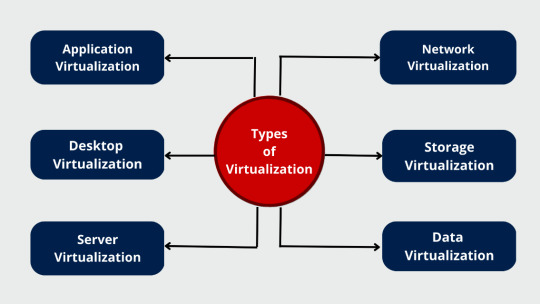#virtualizationincloud
Explore tagged Tumblr posts
Text
Virtualization: The Key Technology Enabling On-Demand Computing in the Cloud
In cloud computing, virtualization is the process of creating a virtual version of something. It can be a virtual version of a server, a desktop, an operating system etc. Whereas the abstraction level, including virtual computer hardware, storage devices and computer network remains the same. Before getting into the depth of virtualization let me tell you in short what cloud computing is.
In simplest terms, cloud computing refers to storing and accessing data and programs on remote servers, instead of the hard drive of a computer or a local server.
Now let's talk about the role of virtualization in cloud computing.
Virtualization in Cloud Computing
Virtualization is a software-based technique that isolates a service from its physical delivery, creating a virtual machine or version of hardware. Multiple operating systems and applications can then run concurrently on the same system, enhancing its flexibility and utility.
Virtualization is an affordable way for many customers to use one application on a computer, which saves on hardware and energy for the cloud providers.
Here are some benefits of virtualization in cloud computing:
Efficiently allocate resources with flexibility.
Boost productivity via virtualization.
Cut IT costs with cost-effective virtualization.
Remote access and rapid scalability.
Run on multiple systems with virtualization.
Ensure high availability and disaster recovery with virtualization.
Types of Virtualizations

Here are the different types of virtualizations:
1. Application Virtualization: It lets you access an application from a server anywhere, while also storing your personal information. This means you can use the application through the internet and it supports different types of applications.
2. Network Virtualization: Many virtual networks can be created on one physical network, each with its own separate control and data plans managed by different people. Network virtualization provides things like switches, routers, firewalls, and load balancers for each network.
3. Desktop Virtualization: It stores the OS on a remote server in a data center, enabling access to the desktop from any location on any system. It benefits people needing specific operating systems with easy management of software installation, updates, patches, and user mobility.
4. Storage Virtualization: It is an array of servers managed by a virtual storage system. It helps in managing storage from multiple sources which are utilized as a single repository. Regardless of any modifications, storage virtualization software ensures uninterrupted operations, stable performance, and an ongoing set of advanced features.
5. Server Virtualization: The physical server is divided into several virtual servers with unique identities and processors, which masks server resources. This allows for isolated operating system use, improving performance and lowering operating costs.
6. Data virtualization: This system gathers information from different places and puts it all together in one place, without needing technical knowledge. It gathers, stores, and organizes data from various sources, and makes it accessible through cloud services.
Thus, virtualization can be a powerful tool for businesses utilizing cloud services. It can reduce costs, increase accessibility, and optimize hardware usage. This leads to improved productivity and operational efficiency. Additionally, virtualization enables easier cloud migration and enhances data availability and energy savings. All of this can positively impact a business's bottom line.
Read about the difference between virtualization and cloud computing in Nitor Infotech’s blog.
#virtualization#cloud computing#virtualizationincloud#virtualizationtechnology#cloudvirtualization#virtualizationbenefits#virtualizationsecurity#virtualizationmanagement#virtualizationsoftware#virtualizationengineer#virtualizationdeployment#virtualizationstrategy#virtualizationtools#virtualizationarchitecture#virtualizationconsulting#virtualizationtraining#cloudcomputingtechnology
0 notes